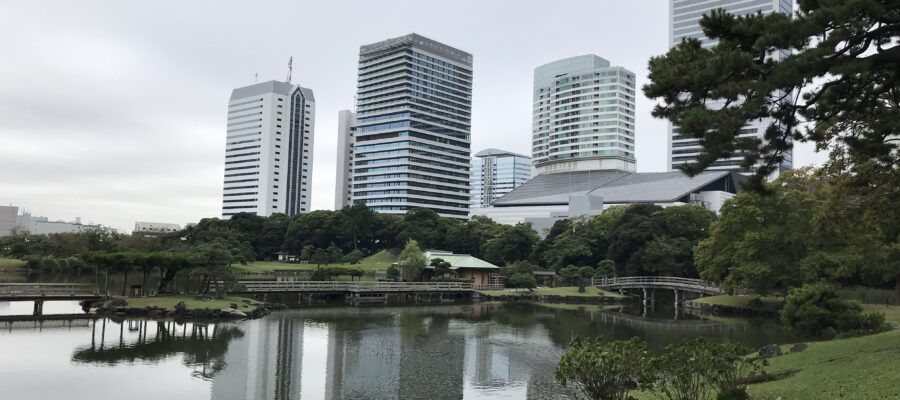東京出張中の昼休みに訪問
10年ほど前、東京に勤務していた際に、一度季節の花を見に訪れたことがありましたが、今回は、大阪から東京への日帰り出張の昼休みに、散策してきました。あいにくの曇り空でしたが、雨に降られずすみました。
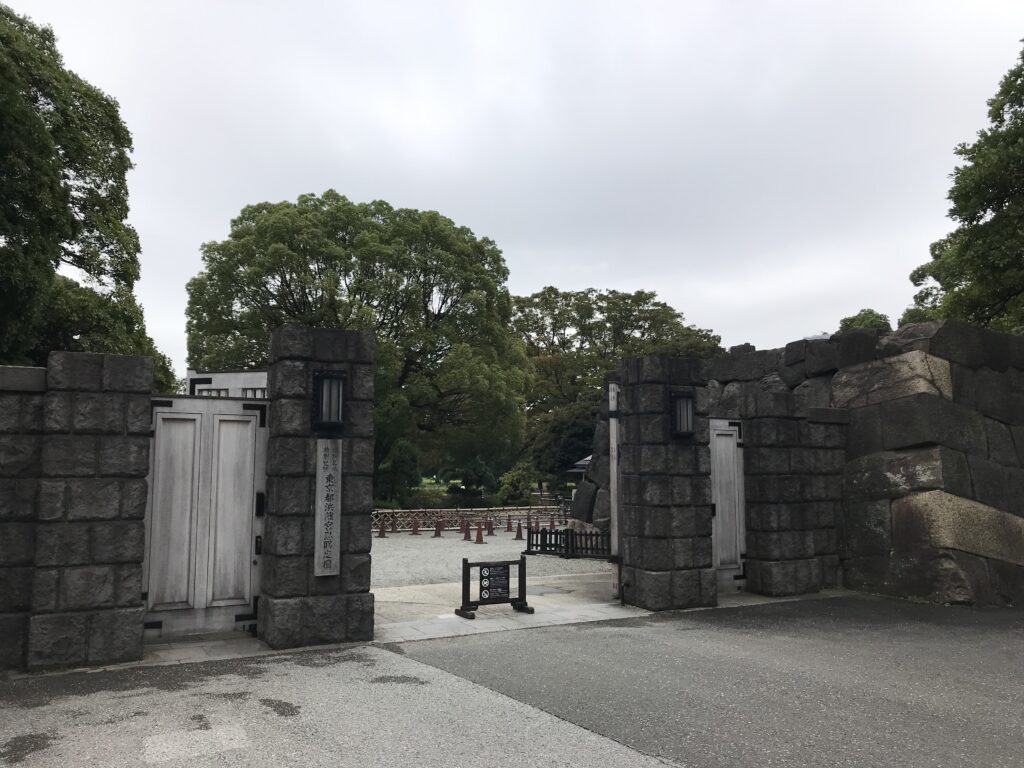
かつては、この庭園の大手門の近くに建つビルに仕事でよくきました。当時は、日本の庭園について関心が低かったため、ビルの窓から樹木の緑を眺める程度でしたが、京都でたくさんの庭園を巡るようになって、東京にある武家の庭園を見たい気持ちになりました。
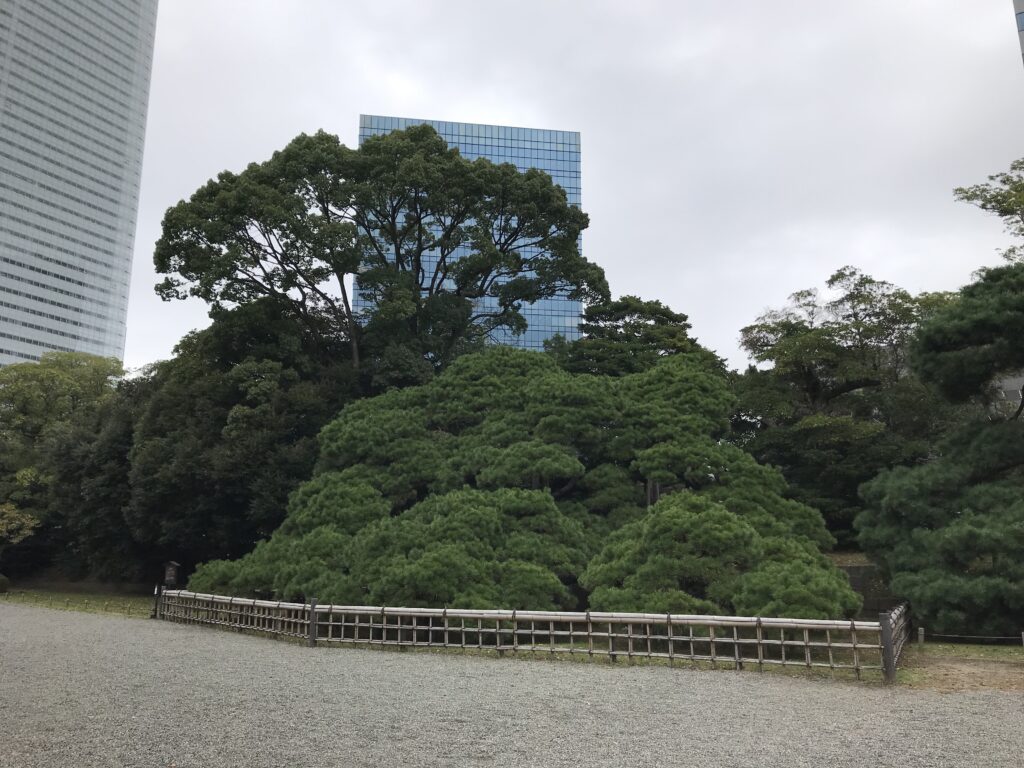
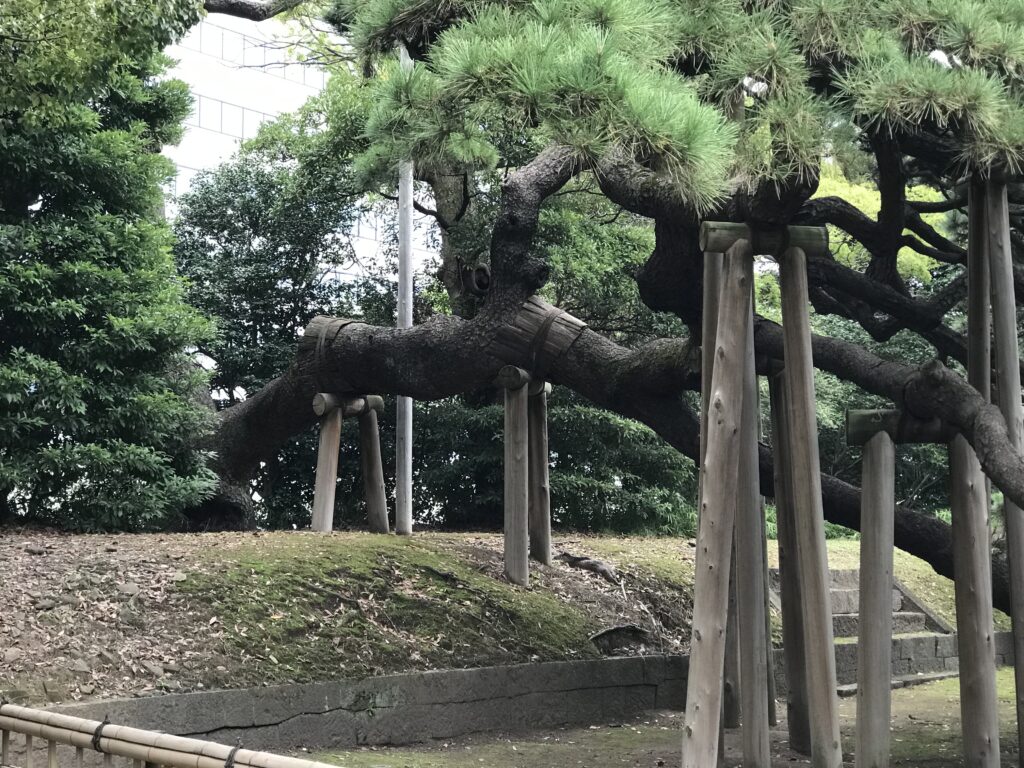
三百年の松の幹に驚く
庭園に入るとすぐに「三百年の松」と呼ばれる立派な松の木に出迎えられます。6代将軍家宣が庭園を大改修した時に、その偉業をたたえて植えられたと言われています。何本かの松が群生しているのかと思って、幹をのぞいてみると、背後から太い幹が水平に張り出していて、枝を広げているのがわかります。いろいろな庭園でも見ましたが、松は真上に伸ばすだけでなく、真横に伸ばすこともできる植栽のようです。
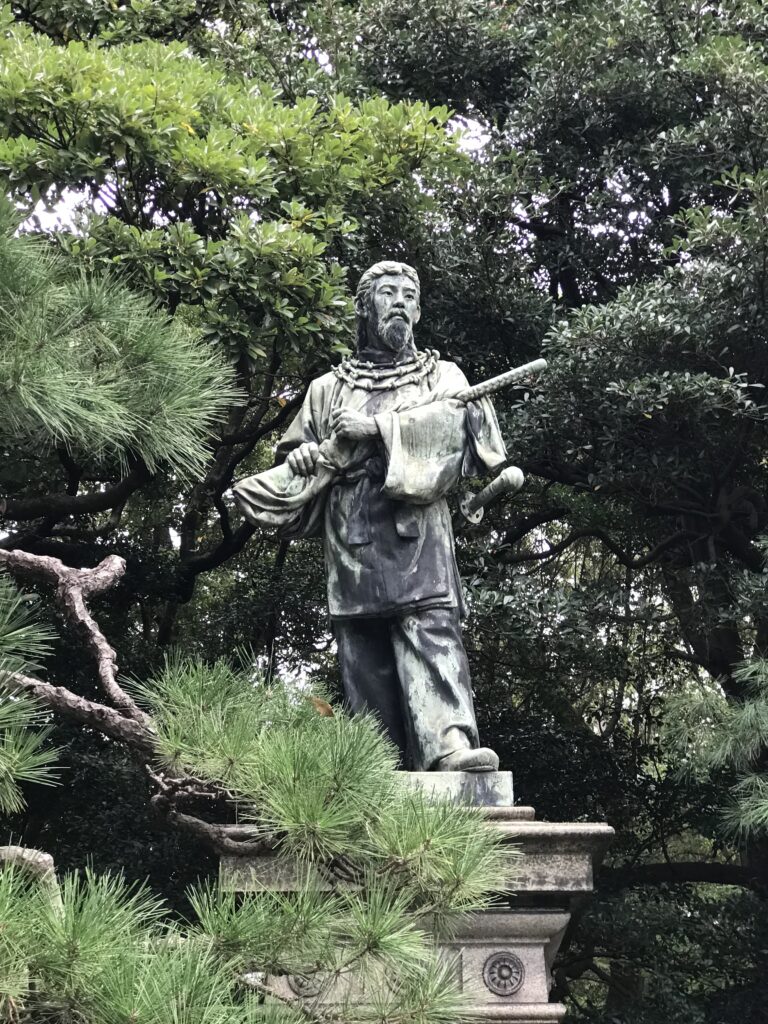
可美真手命(うましまでのみこと)像を通過して、池泉回遊式庭園である、潮入の池まで歩いてきました。海水を引き入れて、潮の干満による変化を楽しむ江戸時代の庭園は、ここにしか残っていないそうです。ゆっくりと回遊してみることにしました。
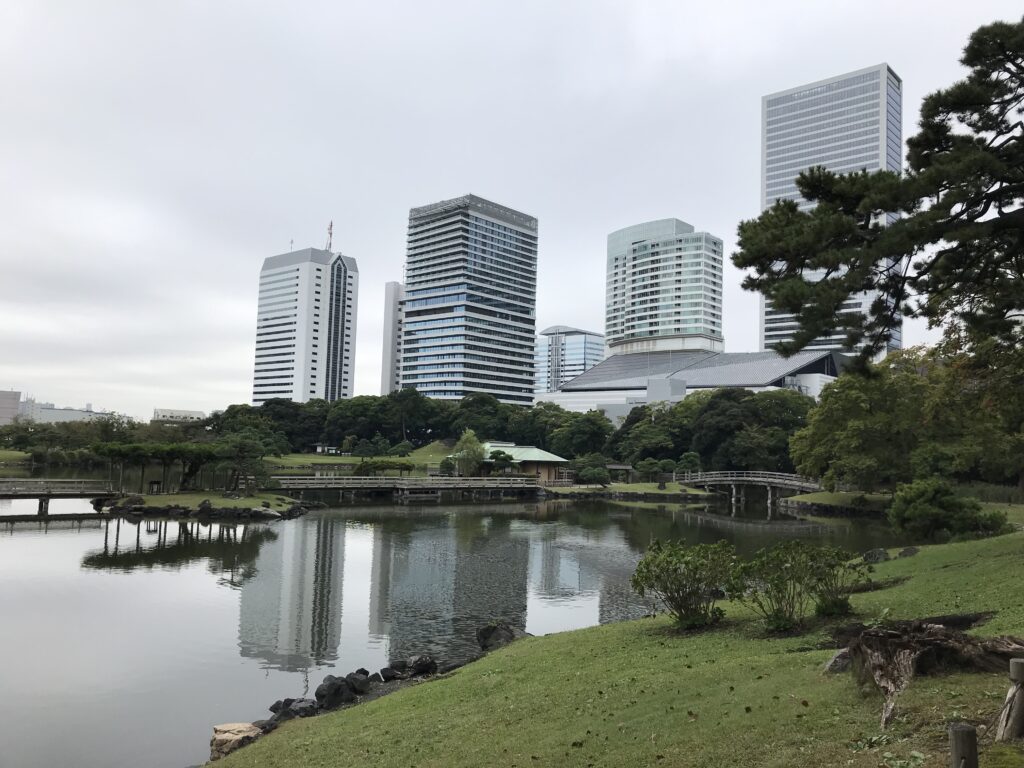
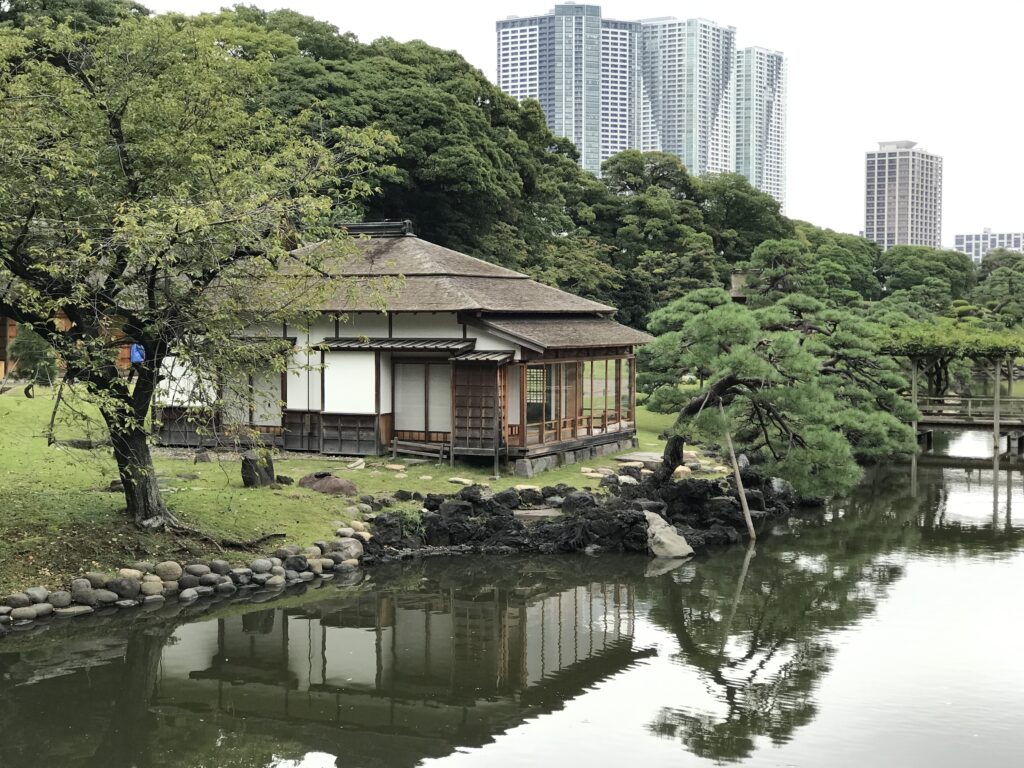
水面に映るビル群が東京らしい
池のまわりにはお茶屋が何軒か立っています。池の対岸からお茶屋を眺めると、水面に背景となる高層ビルも映っているのが、いかにも東京らしい光景です。昭和、平成になって再建されたお茶屋を巡りながら、池の周りを歩きます。途中、富士見山がありました。江戸時代は、この程度の高さの築山に登るだけで、富士山が見えたのでしょう。
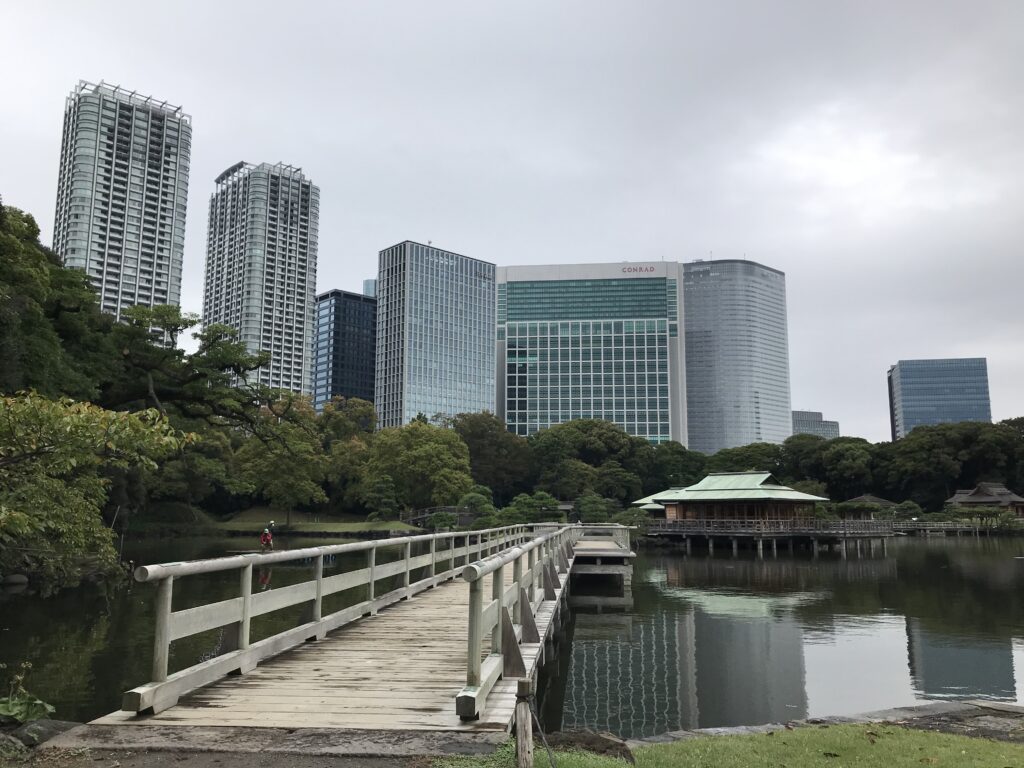
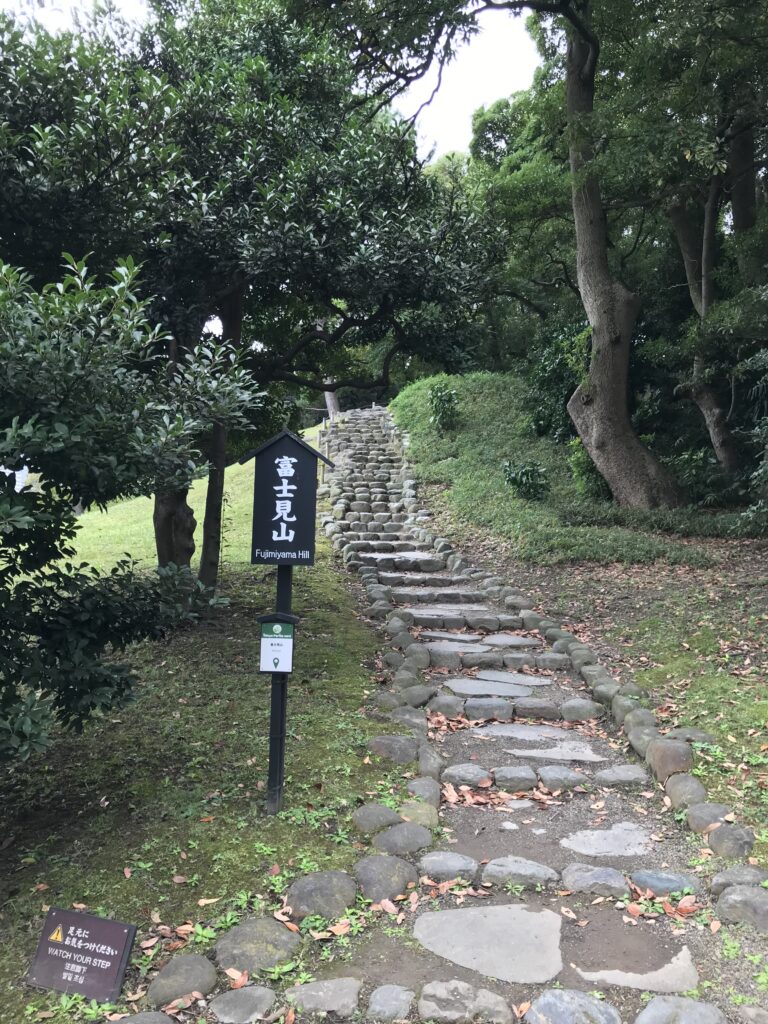
「都会のオアシス」とは、言い古された表現ですが、オフィス街に隣接する場所に、歴史と文化が感じられ、たくさんの人が憩える庭園があることを、もっと多くの人に知って欲しいと思いました。
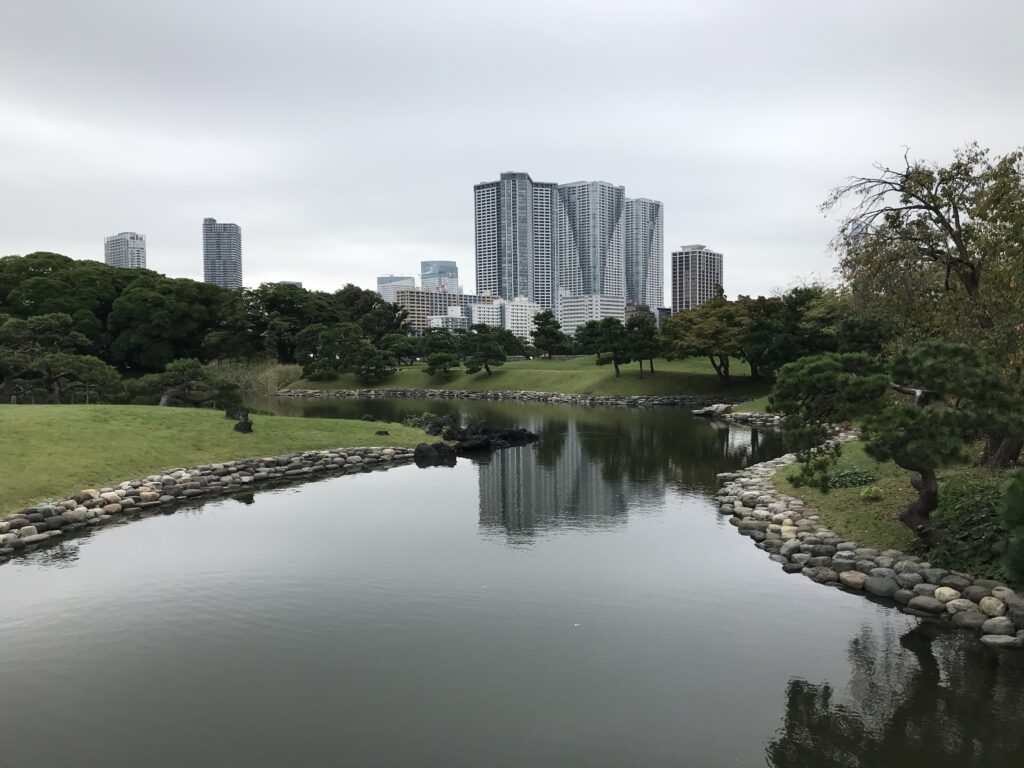
浜離宮恩賜庭園を紹介した書籍

見たい、知りたい!日本の庭園 写真と図解でわかる!「名園」の見方・楽しみ方 (知的生きかた文庫) [ ライフサイエンス ]
価格:759円
(2021/5/13 09:45時点)
感想(0件)
Hamarikyu Onshi Park (English)
Visit during a lunch break during a business trip to Tokyo
About ten years ago, when I was working in Tokyo, I visited this place once to see the seasonal flowers, but this time I took a walk during my lunch break on a one-day business trip from Osaka to Tokyo. Unfortunately, the weather was cloudy, but I didn’t get rained on.
In the past, I used to come to the building near the Otemon gate of this garden for work. At that time, I was not very interested in Japanese gardens, so I could only look at the greenery of the trees from the window of the building, but after visiting many gardens in Kyoto, I felt the desire to see the samurai gardens in Tokyo.
Surprised by the trunk of a three hundred year old pine tree
As soon as I entered the garden, I was greeted by a magnificent pine tree called the “Three Hundred Year Pine Tree,” said to have been planted by the sixth shogun, Ienobu, in honor of his great achievement during a major renovation of the garden. I thought it was a cluster of several pine trees, but when I looked at the trunk, I saw a thick trunk sticking out horizontally from behind, spreading its branches. As I have seen in various gardens, pine trees seem to be a planting material that can be extended not only straight up but also horizontally.
I passed the statue of Umashimade-no-Mikoto and walked to Shioiri-no-Ike, a pond garden. It is said that this is the only remaining Edo-period garden that draws in seawater to enjoy the changes caused by the ebb and flow of the tide. I decided to take my time to walk around.
Buildings reflected in the water are typical of Tokyo.
There are several teahouses around the pond. When you look at the teahouses from the other side of the pond, you can see the reflection of the skyscrapers in the background on the surface of the water, which is very typical of Tokyo. I walked around the pond, visiting teahouses that had been rebuilt in the Showa and Heisei periods. On the way, I came across Mount Fuji-mi. In the Edo period, one would have been able to see Mt. Fuji just by climbing up a hill of this height.
An “oasis in the city” is an overused expression, but I wanted more people to know that there is a garden adjacent to an office district where people can relax and feel the history and culture.
Parc Hamarikyu Onshi (français)
Visite pendant une pause déjeuner lors d’un voyage d’affaires à Tokyo
Il y a une dizaine d’années, lorsque je travaillais à Tokyo, j’ai visité cet endroit une fois pour voir les fleurs de saison, mais cette fois-ci, je m’y suis promené pendant ma pause déjeuner lors d’un voyage d’affaires d’une journée entre Osaka et Tokyo. Malheureusement, le temps était nuageux, mais il n’a pas plu sur moi.
Dans le passé, j’avais l’habitude de venir travailler dans le bâtiment situé près de la porte Otemon de ce jardin. À l’époque, je n’étais pas très intéressé par les jardins japonais et je ne pouvais que regarder la verdure des arbres depuis la fenêtre du bâtiment, mais après avoir visité de nombreux jardins à Kyoto, j’ai ressenti le désir de voir les jardins de samouraïs à Tokyo.
Surprised by the trunk of a three hundred year old pine tree
As soon as I entered the garden, I was greeted by a magnificent pine tree called the “Three Hundred Year Pine Tree,” said to have been planted by the sixth shogun, Ienobu, in honor of his great achievement during a major renovation of the garden. I thought it was a cluster of several pine trees, but when I looked at the trunk, I saw a thick trunk sticking out horizontally from behind, spreading its branches. As I have seen in various gardens, pine trees seem to be a planting material that can be extended not only straight up but also horizontally.
Je suis passé devant la statue de Umashimade-no-Mikoto et j’ai marché jusqu’à Shioiri-no-Ike, un jardin d’étangs. On dit qu’il s’agit du seul jardin de la période Edo qui aspire l’eau de mer pour profiter des changements causés par le flux et le reflux de la marée. J’ai décidé de prendre mon temps pour me promener.
Les bâtiments qui se reflètent dans l’eau sont typiques de Tokyo.
Il y a plusieurs maisons de thé autour de l’étang. Lorsque vous regardez les maisons de thé de l’autre côté de l’étang, vous pouvez voir le reflet des gratte-ciel en arrière-plan sur la surface de l’eau, ce qui est très typique de Tokyo. J’ai fait le tour de l’étang, en visitant des maisons de thé qui avaient été reconstruites au cours des périodes Showa et Heisei. En chemin, j’ai croisé le mont Fuji-mi. À l’époque d’Edo, il suffisait de monter sur une colline de cette hauteur pour voir le mont Fuji.
Une “oasis dans la ville” est une expression galvaudée, mais je voulais que davantage de personnes sachent qu’il existe un jardin adjacent à un quartier de bureaux où les gens peuvent se détendre et sentir l’histoire et la culture.
